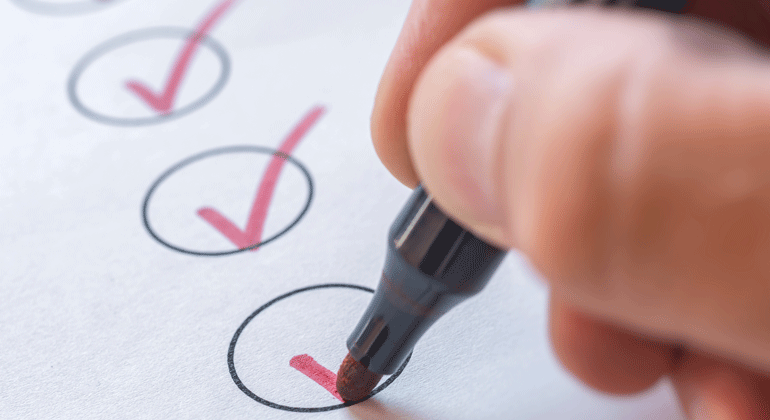Company A’s trade mark is registered in the Swiss trade mark register. A few days later, an email lands in from Company B’s attorney. What happened? The head of Company A only wanted to protect his trade mark. If he had checked beforehand, the entrepreneur would have found that the name already existed in the register. This example shows that anyone who doesn’t do sufficient research before applying for a trade mark can swiftly end up in conflict with third parties that claim that their trade mark has been infringed, for example. The following are the key steps to being well prepared.
For IP professionals
This is the portal for professionals working in the field of intellectual property. Here you'll find direct access to all necessary resources.
Quick links
What you need to know before applying for a trade mark
A trade mark can be registered quickly online. But those who submit an application without doing prior research put their young brand at risk and may lose a lot of time and money.

A protection strategy lays the foundation
Before registering a trade mark, you need to develop a trade mark strategy. It determines the future actions of the trade mark owner and/or the future use of the trade mark. For example, the strategy stipulates the responsibilities for trade mark protection in the company. It also includes the trade mark type and the country and goods and services for which the trade mark should be protected.
Determine the trade mark category and type
Here comes the creative part of the preparatory work. Every applicant finds themselves asking “What trade mark do I want? Should it be just a word, an image or both?” There is a wide range of options, as previously discussed in this article. The individual trade mark is the most common category of trade mark. This means that the natural or legal person named as the applicant is the owner of the trade mark. The next step is to identify the trade mark type. In addition to images (logos) and letters, special types of trade marks such as three-dimensional signs and short melodies can also be registered as trade marks.
Research first, then register
Do you remember Company A from the beginning of the article? The brand manager would want to pay close attention to this section. One key takeaway – before applying, he should have checked whether the proposed trade mark infringes third-party rights (risk of conflict), for example rights to earlier trade marks. It’s also important to do this because when the Swiss Federal Institute of Intellectual Property (IPI) examines an application, it does not check whether identical or similar trade marks are already registered.
You can find this out yourself by looking in the Swiss trade mark register to see if someone is already using a similar or identical trade mark. However, the register only contains trade mark entries that have been filed directly in Switzerland. You can also use the Madrid Monitor, to find out which trade marks were first registered abroad and later extended to Switzerland.
When doing a search, it’s important to remember that, without special software, it’s almost impossible to find all relevant trade marks independently. In addition, you would need to have a knowledge of trade mark law in order to interpret the results. Carrying out a search yourself as described here is a good first step. If you find entries from competitors here, you know that there is a potential risk. Every applicant should carefully consider getting support from a trade mark consultant, for example. In addition to this, some companies offer professional trade mark searches. These services cost money but it can become much more expensive if you run into legal problems with your trade mark.
What do you want your trade mark to protect?
A trade mark protects the labelling (e.g. logo) of products or services. Therefore, the goods and services for which trade mark protection is claimed must be listed in the trade mark application. The selected goods and services must be grouped thematically according to the requirements of an international agreement (Nice Classification) – based on a predefined classification. You can also use the classification tool, to search for suitable terms to help place the product or service in the right class. Anyone who submits a correct list benefits from an express initial examination.
The list of goods and services cannot be extended once the trade mark has been registered. However, individual goods or services or entire classes can be removed. Time and time again, applicants select additional goods, services or entire classes for later use. This is not only costly, but it’s also of little benefit because after it is entered in the trade mark register, the obligation to use the trade mark applies. The trade mark must be used within five years and three months.
For all the steps outlined above, it is advisable to consult a specialist (trade mark consultant/trade mark attorney).
Info on trade mark protection
- The Swiss Federal Institute of Intellectual Property (IPI) does not check whether an identical or similar sign has already been filed or registered.
- Before applying, it’s important to carry out a search to be on the safe side. It's up to the legal entity to assert its rights.
- Once the trade mark has been applied for, it is provisionally protected until it is eventually registered.
- Claims for protection against third parties can only be asserted after registration. However, it’s the filing date that determines who holds the earlier right.
More information – protecting your trade mark



